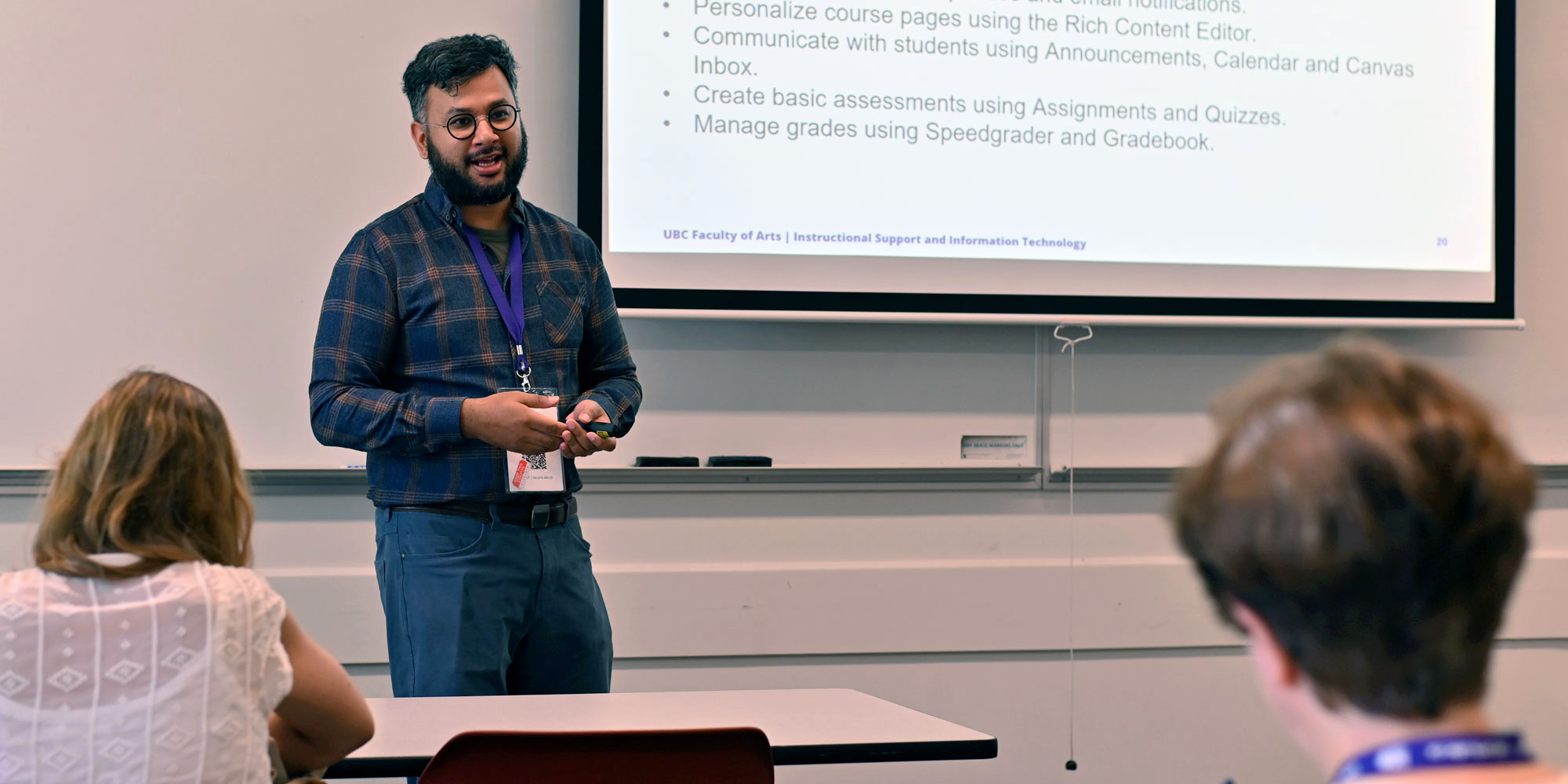Follow best practices when designing your exams.
This guide will go through the different forms your exams can take, designing learning outcomes for your exams, creating questions, training your students on the technology for your exams and more.
Select the form of your exam
Timed Exam
Students complete timed exams within the course’s scheduled class time or the designated final exam time slot. These types of exams are most suitable for large courses, especially those that cover a wide breadth of learning outcomes since they can assess a range of knowledge relatively efficiently. While automated grading of multiple choice or similar questions can save time, it is important to account for the time needed to design effective questions that assess higher-order learning.
Take-home exam
Take-home exams can effectively assess higher-order learning and reduce student anxiety and technical issues. This model is most effective when questions require synthesis across learning goals and analysis or application of course concepts. While take-home exams can be more effective at assessing higher-order learning, they may not be suitable for introductory courses which cover a wider breadth of learning outcomes.
Hybrid exam
Typically, an exam in this format would be separated into two sections. The exam can be designed such that students complete the first section together within a specified time, and additional time, such as a 24-hour window, is allotted for the second section, which typically involves a longer essay response.
In-tray/box exercises
Timed exams where students are assessed on material (e.g., a case study) that has been provided prior to the exam. This model allows you to assess more complex applications or analysis skills while mitigating the effects of test anxiety.
Use learning outcomes to design tasks on the exam
- What are the most important learning outcomes of your course?
- Based on your experience, what problems or questions positively challenge students to demonstrate their level of mastery in the course?
- How will you assess whether students have achieved the learning outcome?
- Consider using an exam blueprint to help you align your intended course learning outcomes and the questions you ask on the exam.
- Consider helping students succeed by framing it in the context of how it is important to master the material for their future careers (I.e., structural and civil engineers need to have a mastery in concepts such as X, Y, Z, so they can design, construct, repair bridges, tunnels, and other structures that are stable and safe for the public to use).
- Consider connecting concepts taught in class to real-life examples so students can see the relevance and importance of what they are learning.
Create questions for the exam
Design a pre-exam writing task
Research has demonstrated the power of positive self-reflection to reduce test anxiety and enhance students’ self-efficacy and exam performance (Ramirez, G. and Beilock, S. L., 2011). When students write about their past challenges and their strategies to cope with them successfully before a high-stakes assessment, they can enhance self-efficacy and alleviate test anxiety, self-doubt, and fixed mindset, which interferes with learning and performance.
Please use the next 3 minutes to answer the following question. This section is not graded or counted as part of your exam time.
“Write about a positive experience in which you coped with a challenge successfully while feeling joy and pride. Describe these feelings and explain what these experiences mean to you.”
Construct effective questions and exam assessment tasks
Adapt the questions you would ask on a face-to-face final exam for online delivery by asking fewer multiple-choice questions and more questions that assess higher-order thinking skills. For guidance on adapting your exam tasks, consult the following resources to get started:
Post-exam reflection
Consider including a reflection activity at the end of your exam. This will help students to reflect on their learning process and help them to share learning achievements that they may not have had the chance to share in the exam.
An unscripted reflection activity that assesses personal engagement with course content can also help to ensure academic honesty.
Example prompt:
What are some study strategies you used for studying for this exam? How did you feel about the effectiveness of your study strategies for this exam?
Prepare students with the technology used for the exam
To ensure smooth use of any new teaching tool, it is important to select tools carefully and prepare your students for these technologies beforehand.
- Communicating with your class about which tools they will use and the reasoning behind your choice will help to alleviate their anxiety.
- Having students do a test run of the technology you plan to use will troubleshoot possible technical problems before the exam.
- Arts ISIT has set up an Exam practice run course that students can self-enrol in. It includes student set-up guides and test quizzes that will ensure exam tools are compatible with their devices.
- Be available to your students during the exam.
- To minimize the isolation from remote assessment activities, you can connect with your students during the exam through a video conferencing tool.
- Make use of the technical support available for instructors and make sure students are aware of the technical support that is available to them.
- Take advantage of extended Arts ISIT exam hours to connect with tech support via virtual drop-in, phone, or email.
- Students can contact the Chapman Learning Commons through email or virtual drop-in. They can also email or phone the UBC ITSC Helpdesk.
- Have a contingency plan or alternative examination task if a student requires a last-minute accommodation.


